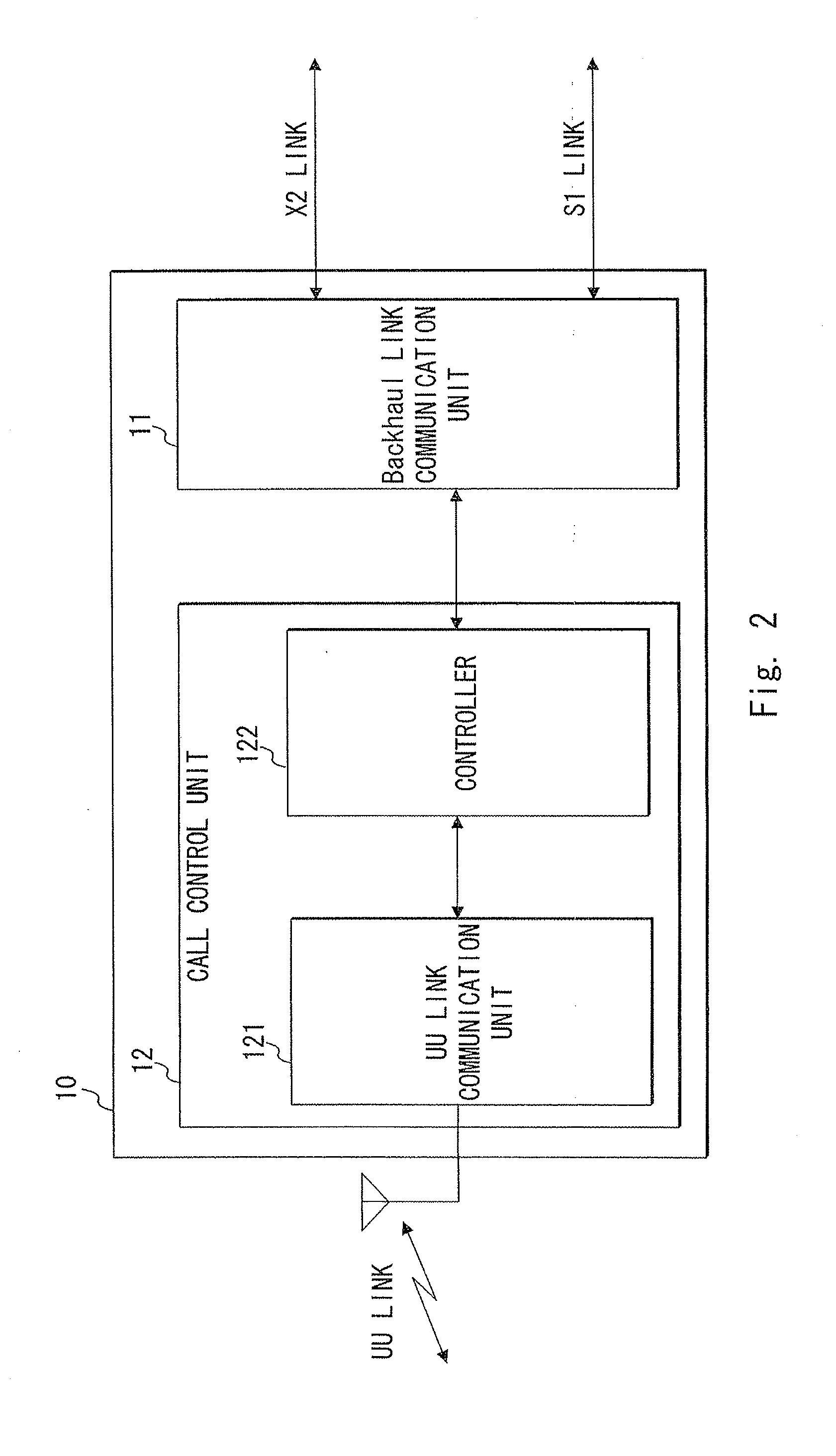Base station, mobile communication system, and call admission control method and call admission control program of base station
a technology of mobile communication system and call admission control, which is applied in the direction of electrical equipment, wireless communication, etc., can solve the problems of inability to accurately estimate the load increase amount l_d, inability to guarantee the service quality required by each ue, etc., to reduce the occurrence of call loss, suppress the degradation of communication quality, and reduce the need for handover.
- Summary
- Abstract
- Description
- Claims
- Application Information
AI Technical Summary
Benefits of technology
Problems solved by technology
Method used
Image
Examples
first exemplary embodiment
[0057]As shown in FIG. 1, a mobile communication system 1 according to this exemplary embodiment includes two eNBs 10_1 and 10_2 (hereinafter sometimes collectively denoted by the numeral 10) that are located adjacent to each other, a UE 20, an MME (Mobility Management Entity) 30, and an S-GW (Serving Gateway) 40. The eNB 10 and the MME 30 are connected by an S1-MME link. Further, the eNB 10 and the S-GW 40 are connected by an S1-U link. Further, the eNB 10_1 and the eNB 10_2 are connected by an X2 link. Furthermore, a radio section between the eNB 10 and the UE 20 is typically referred to as an UU link. In the following description, the S1-MME link and the S1-U link may collectively be referred to as an S1 link. Further, the S1 link and the X2 link may collectively be referred to as a Backhaul link.
[0058]Among them, typical UE, MME, and S-GW compliant with the LTE can be used for the UE 20, the MME 30, and the S-GW 40, respectively. Thus, detailed description thereof will be omitte...
second exemplary embodiment
[0103]A mobile communication system according to this exemplary embodiment can be formed as is similar to FIG. 1. Further, an eNB according to this exemplary embodiment can be formed as is similar to FIG. 2. However, the eNB according to this exemplary is different from that of the first exemplary embodiment in that the controller 122 in the eNB 10 executes call admission control as shown in FIG. 8.
[0104]Specifically, as is similar to the call admission control shown above in FIG. 4 or 6, the controller 122 receives the reception quality Ms in the handover source cell and the reception quality Mn in the handover destination cell via the Backhaul link communication unit 11 (Step S401).
[0105]At this time, the controller 122 normally estimates the load increase amount L_d as is different from the call admission control stated above (Step S402). In summary, the controller 122 equally estimates the load increase amount for each UE without making any distinction. When the estimation is pe...
third exemplary embodiment
[0114]A mobile communication system according to this exemplary embodiment can be formed as is similar to FIG. 1. However, an eNB according to this exemplary embodiment is different from that of the first exemplary embodiment in that it is formed as shown in FIG. 9.
[0115]Specifically, an eNB 10a shown in FIG. 9 includes a UU link communication unit 13 and a call admission request unit 14.
[0116]The UU link communication unit 13 performs radio communication with the UE 20 via the UU link.
[0117]Meanwhile, roughly speaking, the call admission request unit 14 determines whether it is possible to accept a call associated with the UE 20 in place of the handover destination eNB, and requests the handover destination eNB to accept the call according to the determination result (hereinafter, this series of processing will be referred to as “call admission request processing”). Specifically, the call admission request unit 14 includes a Backhaul link communication unit 141 and a controller 142...
PUM
 Login to View More
Login to View More Abstract
Description
Claims
Application Information
 Login to View More
Login to View More - R&D
- Intellectual Property
- Life Sciences
- Materials
- Tech Scout
- Unparalleled Data Quality
- Higher Quality Content
- 60% Fewer Hallucinations
Browse by: Latest US Patents, China's latest patents, Technical Efficacy Thesaurus, Application Domain, Technology Topic, Popular Technical Reports.
© 2025 PatSnap. All rights reserved.Legal|Privacy policy|Modern Slavery Act Transparency Statement|Sitemap|About US| Contact US: help@patsnap.com



